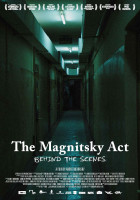The Magnitsky Act. Behind the Scenes Filming Locations

Where was The Magnitsky Act. Behind the Scenes filmed? The Magnitsky Act. Behind the Scenes was filmed in 10 locations across Russia, Ukraine, United Kingdom, France, Germany, United States, Norway and Belgium in the following places:
The Magnitsky Act. Behind the Scenes Filming Locations
Moscow, on the Moskva River in western Russia, is the nation’s cosmopolitan capital. In its historic core is the Kremlin, a complex that’s home to the president and tsarist treasures in the Armoury. Outside its walls is Red Square, Russia's symbolic center. It's home to Lenin’s Mausoleum, the State Historical Museum's comprehensive collection and St. Basil’s Cathedral, known for its colorful, onion-shaped domes.
Kyiv is the capital and most populous city of Ukraine. It is in north-central Ukraine along the Dnieper River. As of 1 January 2022, its population was 2,952,301, making Kyiv the seventh-most populous city in Europe. Kyiv is an important industrial, scientific, educational, and cultural center in Eastern Europe.
London, the capital of England and the United Kingdom, is a 21st-century city with history stretching back to Roman times. At its centre stand the imposing Houses of Parliament, the iconic ‘Big Ben’ clock tower and Westminster Abbey, site of British monarch coronations. Across the Thames River, the London Eye observation wheel provides panoramic views of the South Bank cultural complex, and the entire city.
Paris, France's capital, is a major European city and a global center for art, fashion, gastronomy and culture. Its 19th-century cityscape is crisscrossed by wide boulevards and the River Seine. Beyond such landmarks as the Eiffel Tower and the 12th-century, Gothic Notre-Dame cathedral, the city is known for its cafe culture and designer boutiques along the Rue du Faubourg Saint-Honoré.
Berlin, Germany’s capital, dates to the 13th century. Reminders of the city's turbulent 20th-century history include its Holocaust memorial and the Berlin Wall's graffitied remains. Divided during the Cold War, its 18th-century Brandenburg Gate has become a symbol of reunification. The city's also known for its art scene and modern landmarks like the gold-colored, swoop-roofed Berliner Philharmonie, built in 1963.
Washington, DC, the U.S. capital, is a compact city on the Potomac River, bordering the states of Maryland and Virginia. It’s defined by imposing neoclassical monuments and buildings – including the iconic ones that house the federal government’s 3 branches: the Capitol, White House and Supreme Court. It's also home to iconic museums and performing-arts venues such as the Kennedy Center.
Stavanger is a city in southwestern Norway. In the center of town, Stavanger Cathedral dates back to the city’s 12th-century founding. Stavanger Museum chronicles the city’s history and displays preserved wildlife. The Norwegian Petroleum Museum illuminates the oil industry with submersibles, a large drill bit and an escape chute. The shopping street Øvre Holmegate is known for its colorful houses.
Strasbourg is the capital city of the Grand Est region, formerly Alsace, in northeastern France. It's also the formal seat of the European Parliament and sits near the German border, with culture and architecture blending German and French influences. Its Gothic Cathédrale Notre-Dame features daily shows from its astronomical clock and sweeping views of the Rhine River from partway up its 142m spire.
Brussels is Belgium’s capital and home to the European Union headquarters. The Grand-Place square at the heart of the city has shops and cafes inside ornate 17th-century guildhouses, and the intricate Gothic Hôtel de Ville (town hall) with a distinctive bell tower. The 19th-century Maison du Roi houses the Musée de la Ville de Bruxelles city-history museum, including costumes for the city’s famed Manneken Pis statue.
Oslo, the capital of Norway, sits on the country’s southern coast at the head of the Oslofjord. It’s known for its green spaces and museums. Many of these are on the Bygdøy Peninsula, including the waterside Norwegian Maritime Museum and the Viking Ship Museum, with Viking ships from the 9th century. The Holmenkollbakken is a ski-jumping hill with panoramic views of the fjord. It also has a ski museum.
The Magnitsky Act. Behind the Scenes (2016)
What started as a docu-drama about a Russian police plot to steal a billion dollars from a US financier and to murder his faithful tax lawyer Sergei Magnitsky, became an investigation of a massive hoax and an unprecedented international cover-up.The Magnitsky Case in the version of the financier Bill Browder became the basis for laws and sanctions targeting Russian police and other officials, and for the claims that Putin personally had received a share of the millions looted from the Russian people. The film's director and a Kremlin critic, Andrei Nekrasov discovers that a narrative defining Western Russia policies is riddled with falsehooods.
